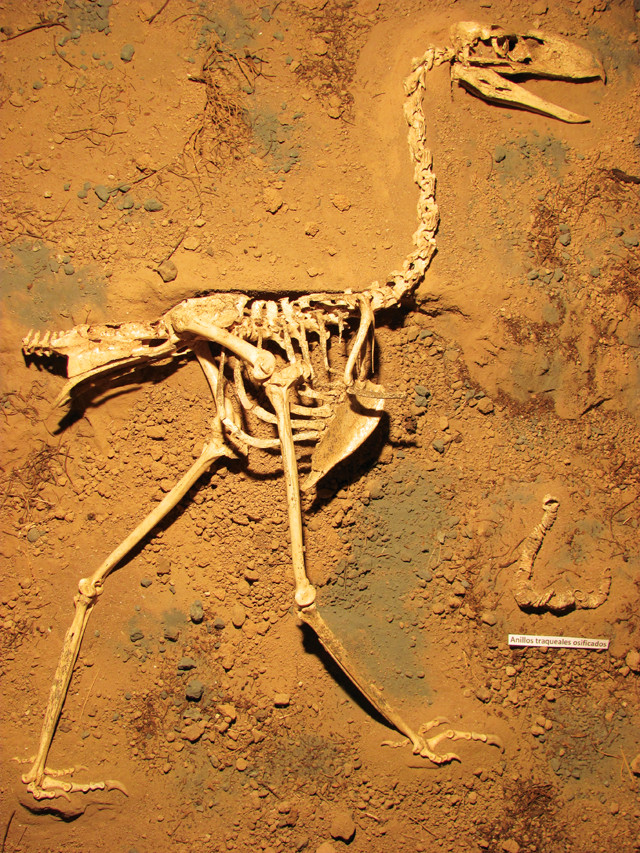
by Mary Caperton Morton Friday, July 17, 2015

A nearly complete skeleton of Llallawavis scagliai is on display at the Lorenzo Scaglia Municipal Museum of Natural Sciences in Buenos Aires, Argentina. Credit: M. Taglioretti and F. Scaglia.
A recently discovered fossil skeleton is giving paleontologists a nearly complete look at a new species in the family of big-beaked giants known as “terror birds.” Thought to have grown as tall as 3 meters, these flightless birds roamed South America as apex predators before going extinct about 2.5 million years ago.
The new fossil, found in Argentina, is from a Late Pliocene specimen that stood about 1.2 meters tall, and represents a previously unknown species named Llallawavis scagliai, meaning “Scaglia’s magnificent bird.” With more than 90 percent of the skeleton exquisitely preserved, including the auditory region of the skull, voice box, trachea, bones for focusing the eye, and the palate, the new find provides unprecedented insight into the sensory capabilities of these carnivorous birds.
A new study published in the Journal of Vertebrate Paleontology describes the structures of the bird’s inner ear, which seem to indicate that the terror bird had a limited range of hearing, confined to low-frequency sounds, much like modern ostriches and emus.
“The mean hearing [sensitivity] estimated for this terror bird was below the average for most living birds,” said lead author Federico Degrange of the National University of Córdoba in Argentina, in a statement. If Llallawavis could only hear within a limited range, it may also have “had a narrow, low vocalization frequency range,” Degrange said, which it presumably used for communication and possibly prey detection.
This is the first time that the rarely preserved structures that control hearing sensitivity have been reconstructed for any terror bird. The specimen may provide further clues about the evolution, behavior and ecology of this group of extinct birds, the researchers suggested.
© 2008-2021. All rights reserved. Any copying, redistribution or retransmission of any of the contents of this service without the expressed written permission of the American Geosciences Institute is expressly prohibited. Click here for all copyright requests.